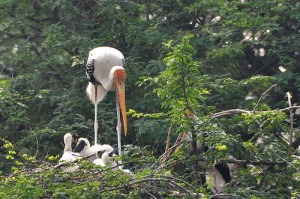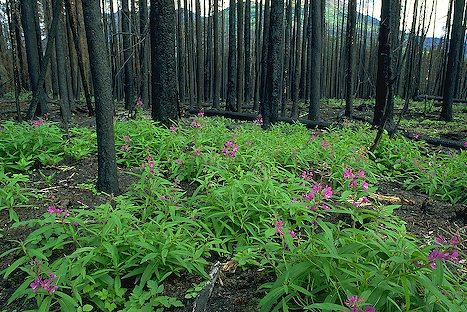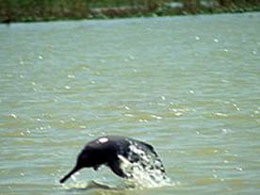 Tucked away near the eastern border of Rajasthan state and adjacent to the Banganga River is a large & shallow concave wetland – The Keoladeo Ghana National Park, more commonly known as the Bharatpur Bird Sanctuary. Being home to over 350 species of birds, it is this place that is every bird lover’s favourite destination.
Tucked away near the eastern border of Rajasthan state and adjacent to the Banganga River is a large & shallow concave wetland – The Keoladeo Ghana National Park, more commonly known as the Bharatpur Bird Sanctuary. Being home to over 350 species of birds, it is this place that is every bird lover’s favourite destination.
The sanctuary is the migratory home of the endangered Siberian Cranes in India. They arrive at the park in the middle of October to November and leave for Siberia between February and March.
Other migratory birds found here include the Brahmini duck, Pintail, Common Teal, Gadwall, Northern Shoveller, Greylag, Bar headed Geese, Widgeon, Common Pochard, White eyed Pochard, Coot and Tufted Duck. The Park houses 4 species of Stork that is the Openbill Stork, the Painted Stork, the Black Neck Stork and the Woolly Necked Stork. The unique Dusky Horned Owl is among the nine species of Owls found here. Excluding the Owls and the Nightjars, around 42 species of Raptors have been recorded in the Park. Another notable thing about the park is that it is the breeding ground for 15 species of Herons.
A wintering ground for a large number of migratory waterfowls that breed in the Palearctic region, Bharatpur Bird Sanctuary is known as one of the best bird sanctuaries of Asia.
About the Sanctuary
The name Keoladeo Ghana national park comes from a Keoladeo ‘Shiva’ temple inside the boundaries and the word ‘Ghana’ means dense denoting the thick forest. Bharatpur Lake is a man-made lake that was constructed around the park to save the Bharatpur town from floods.
Previously a duck hunting reserve for the princes of India, it was declared as a protected forest in the year 1967. The park is spread across an area of 29 sq. km and comprises of a medley of habitats that include wetlands, woodlands, scrub forests and grasslands.
Besides being one of the five World Heritage Sites in India, the Keoladeo Ghana National Park has also been designated as a RAMSAR site. The Salim Ali Visitor Interpretation Centre at the Park has been also honoured as the Best Asian Wetland Centre Award 2010 by Wetland Links International.
Other Flora and Fauna
Around 34 species of mammals are found in the park. To name a few – Nilgai, Chital, Sambar, Hog Deer, Hyena, Jungle Cat, Fishing Cat, Common palm Civet, Small Indian Civet etc.
Besides these, there are 22 species of reptiles, 8 species of amphibians, 57 species of fishes, 71 species of butterflies, over 30 species of dragonflies and more than 30 species of spiders. The Wetlands of the Park are a part of the Indo Gangetic Plains and the Park itself displays utmost richness in bio-diversity. There are about 372 plant species out of which 96 are Aquatic plants.
The grasses commonly found are Paspalum distichum, Paspalidium punctatum, Cynodon dactylon, Desmostachya bipinnata, Dicanthium annulatum and Vetiveria zizanioides.
The thorny Acacia form a major part of the shrub lands and the Kadam trees found in scattered pockets make up the wood lands.
Best Time to visit
August to November is the best time visit for viewing resident birds and for viewing migratory birds, October to February is the best time.
Going there & getting around
One can reach the Bharatpur Bird sanctuary via:
Air – The nearest Airport is Agra at 56 kmts away from Bharatpur.
Rail – The Bharatpur Railway station is a mere 6 kmts away from the Park.
Stay –
Once at Bharatpur, one can opt to stay at the Bharatpur Forest Lodge or Shanti Kutir which is managed by ITDC (India Tourism Development Corporation). For a more luxurious stay, there are many good hotels and resorts at Bharatpur. Either ways, it is advisable to book in advance specially during the winter season.
Timings –
The Park timings are from 6 AM to 6 PM. Ticket charges are approximately INR 25 for Indian visitors and INR 200 for international tourists.
Private vehicles are permitted up to about 1.7 kmts inside the park. After that the park can be explored by hiking or by hiring Rickshaws or Cycle Rickshaws. Some of the rickshaw pullers double up as the guides as well. The best way to explore the Park and watch the birds in peace however is by taking a boat ride. A pair of Binoculars, a camera and a good bird guide is a must have for Birding enthusiasts.
Other Attractions near Bharatpur Bird Sanctuary
While at Bharatpur one can visit the Bharatpur palace which is a blend of Jat and Mughal architecture. The Deeg palace and the Lohagarh fort are also worth a visit.
More Related Stories,
14 Species of Birds on the Verge of Extinction
Artificial Beak Help Save Hornbills
Black necked Crane Spotted in Arunachal Pradesh
Image by Madhur Mangal via cc/Flickr






4 thoughts on “A Birder’s Paradise: Bharatpur Bird Sanctuary”